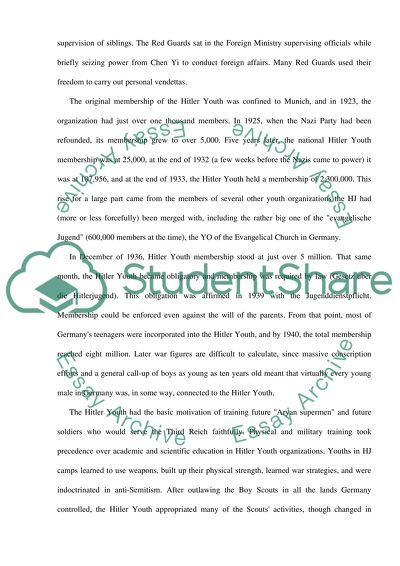Cite this document
(“Hitler Youth of Germany and the Red Guards in China Essay”, n.d.)
Retrieved from https://studentshare.org/miscellaneous/1528802-hitler-youth-of-germany-and-the-red-guards-in-china
Retrieved from https://studentshare.org/miscellaneous/1528802-hitler-youth-of-germany-and-the-red-guards-in-china
(Hitler Youth of Germany and the Red Guards in China Essay)
https://studentshare.org/miscellaneous/1528802-hitler-youth-of-germany-and-the-red-guards-in-china.
https://studentshare.org/miscellaneous/1528802-hitler-youth-of-germany-and-the-red-guards-in-china.
“Hitler Youth of Germany and the Red Guards in China Essay”, n.d. https://studentshare.org/miscellaneous/1528802-hitler-youth-of-germany-and-the-red-guards-in-china.


